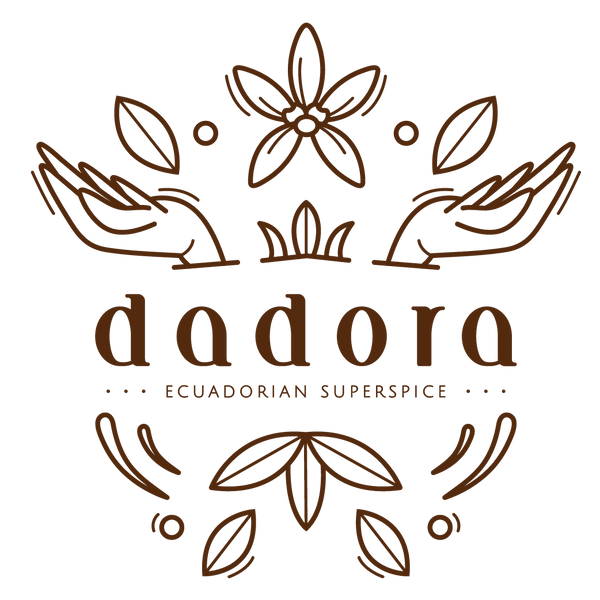Vanilla may be the world’s favorite flavor, but not all vanilla beans are created equal. The most famous origin — Madagascar — has long dominated the market, yet another region is quietly redefining what premium vanilla can be: Ecuador.
At Dadora Vanilla, we grow Vanilla tahitensis in Ecuador’s tropical lowlands, then cure it by hand in the cool, dry air of the Andean highlands. The result? A vanilla that’s deeper, more aromatic, and distinctly floral — unlike anything from Madagascar.
Madagascar Vanilla: The Classic Choice
Madagascar produces the majority of the world’s vanilla, mostly the Vanilla planifolia variety.
Flavor: sweet, creamy, and familiar — the “traditional” vanilla taste found in most extracts.
Aroma: strong, buttery, with a warm spice note.
Common uses: ice cream, cookies, and classic desserts.
It’s reliable and consistent, but because of large-scale commercial curing, it can lack some of the nuance found in smaller-batch beans.

Ecuadorian Vanilla: A Rising Star
Ecuador’s unique climate and volcanic soil create ideal growing conditions for Vanilla tahitensis — the same species prized in Tahiti.
Flavor: rich yet delicate, with floral and fruity undertones.
Aroma: intoxicatingly perfumed, with hints of cherry, rose, and chocolate.
Curing: slow sun-drying in the highlands intensifies aroma and complexity.
Each bean is cultivated using natural, pesticide-free methods, then sun-cured by hand, not industrially dehydrated. This small-batch approach preserves the bean’s essential oils and vanillin content, resulting in an extraordinary depth of flavor.
Ecuadorian vs. Madagascar Vanilla at a Glance
| Feature | Ecuadorian Vanilla (Tahitensis) | Madagascar Vanilla (Planifolia) |
|---|---|---|
| Origin | Ecuador, South America | Madagascar, Africa |
| Variety | Vanilla tahitensis | Vanilla planifolia |
| Flavor Profile | Floral, fruity, complex | Creamy, sweet, classic |
| Aroma | Light, aromatic, tropical | Strong, buttery |
| Curing Method | Hand-sun-cured in highlands | Hot-box commercial curing |
| Use Case | Gourmet desserts, extracts, drinks | Everyday baking and ice cream |
| Uniqueness | Rare, limited harvest | Mass-produced |

Why Choose Ecuadorian Vanilla?
If you’ve ever opened a package of Dadora Vanilla beans, you know the difference instantly — a natural fragrance that fills the air before you even start baking.
Beyond flavor, choosing Ecuadorian vanilla supports sustainable agriculture and ethical wages for local communities. Our vanilla is grown, cured, and packed by hand — ensuring every bean has a story and a purpose.
How to Experience It Yourself
Try comparing both origins side by side:
Vanilla Beans: Shop Dadora Grade A Ecuadorian Vanilla Beans
Vanilla Powder: Explore Ground Vanilla Powder
Once you’ve baked with Ecuadorian beans, you’ll understand why chefs and home bakers alike are calling it the next evolution of vanilla.

Closing Thought
The difference between Ecuadorian and Madagascar vanilla isn’t just taste — it’s philosophy. One is mass-produced for volume; the other is crafted for flavor, integrity, and sustainability.
At Dadora Vanilla, we’re proud to grow our beans in the lush tropics of Esmeraldas and cure them under the Andean sun — bringing you the world’s most aromatic, ethically sourced vanilla. We’re very hands-on and oversee every step of the process — from cultivation to packaging — to ensure the highest quality and a truly farm-to-table product.

